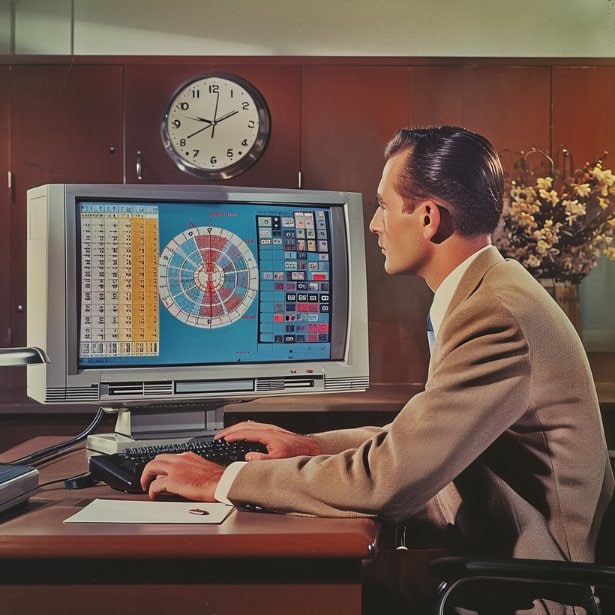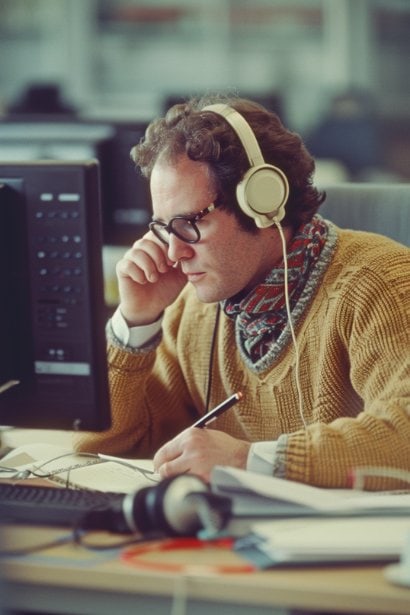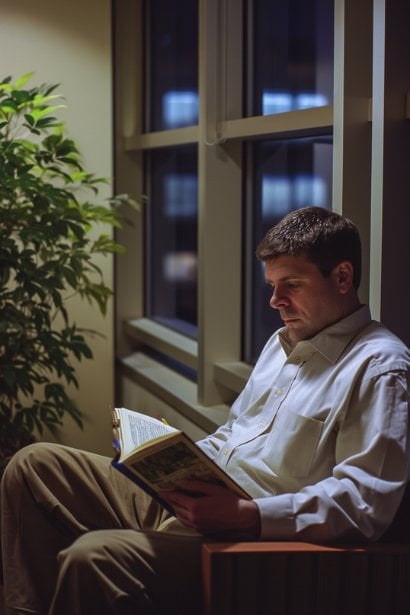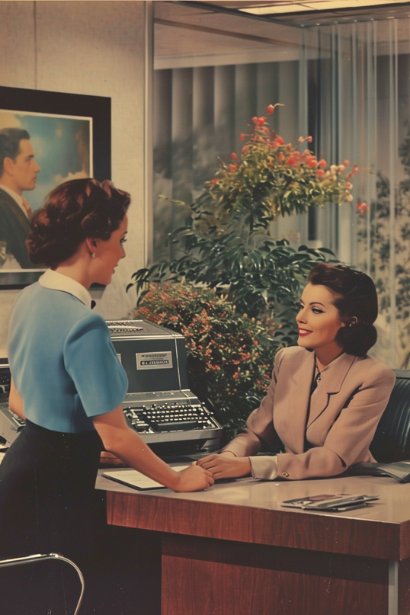How to Make Time Go Faster at Work?

Feeling as though time is dragging during the workday is a common experience for many individuals. It can be particularly pronounced on days filled with repetitive tasks or when one’s workload is lighter than usual. Counteracting the slow passage of time can be achieved through a mix of strategies that enhance productivity and adjust one’s daily routine. By shifting one’s focus towards these tactics, not only can the perception of time change, but workdays can become more engaging and satisfying.
Perception of time is subjective and can be influenced by how one interacts with their work environment. Engaging in varied tasks, setting small, achievable goals throughout the day, and optimizing one’s workspace for comfort and efficiency can alter the pace at which time seems to pass. Additionally, making sure to prioritize health and well-being, by taking regular breaks and practicing mindfulness, contributes to a sense of time well spent. Understanding and implementing these techniques can make periods of slow activity feel more dynamic, improving both one’s professional productivity and overall workplace satisfaction.
Key Takeaways
- Implementing varied tasks and goals can make time feel more fleeting.
- Optimizing the workspace enhances comfort and time perception.
- Prioritizing well-being is crucial for a fulfilling work experience.
Understanding Time Perception
The perception of time at work is subjective and can be influenced by a variety of factors. Individuals may notice that time seems to crawl during monotonous tasks, yet it races during moments of high engagement and concentration. This phenomenon is linked to an individual’s mental engagement and emotional state.

Productivity and the perception of time are closely intertwined. When workers are deeply involved in a task, their attention is consumed by the activity, leading to a state where they’re less aware of the passage of time. This state is often referred to as the state of flow, a concept identified by psychologist Mihaly Csikszentmihalyi. Achieving flow is synonymous with being so engrossed in an activity that everything else becomes negligible.
To achieve flow, and thus alter time perception in a positive manner, employees need to:
- Engage in tasks that are challenging yet match their skill level
- Set clear objectives for their work
- Minimize interruptions to maintain focus
The following table summarizes the impact on time perception:
| Factor | Impact on Time Perception |
|---|---|
| Focus | Increases speed of perceived time |
| Monotony | Decreases speed of perceived time |
| Engagement | Time passes unnoticeably in a state of flow |
| Interruptions | Fragmented attention span, slower perceived time |
Understanding these elements can help individuals manage their workflow to make the hours spent at work feel quicker and more rewarding.
Strategies for Increasing Productivity
Effective productivity at work is often achieved through mastering several strategies, including efficient time management and goal-setting. These methods can help individuals complete work promptly, making time feel like it’s moving faster.

1. Time Management Techniques
One highly effective method is time blocking, where employees allocate specific blocks of time to different tasks, minimizing distractions and enhancing focus. The Pomodoro Technique is another popular strategy, involving setting a timer for 25 minutes of concentrated work followed by a short break. This enhances productivity through frequent, scheduled pauses that keep the mind fresh.
2. Setting Clear Goals
Having clear goals provides direction and motivation. It helps workers prioritize tasks that align with these objectives. Specific, measurable, achievable, relevant, and time-bound (SMART) goals are a reliable framework, ensuring that targets are well-defined and attainable within a set period.
3. Organization and Scheduling
Organization streamlines workspace and tasks, reducing time spent searching for materials or information. A well-maintained plan, through scheduling, eliminates uncertainty about what to do next. Digital or paper-based planners can assist with organizing daily, weekly, or monthly tasks, enabling individuals to meet deadlines systematically.
4. Avoiding Procrastination
Combating procrastination is key to sustained productivity. Techniques include breaking down larger projects into smaller, more manageable tasks and setting deadlines for these segments. This eases the overwhelming feeling that often leads to delay and instead promotes consistent progress.
5. Achieving a State of Flow
Entering a state of flow, a condition of heightened focus and enjoyment during an activity, is crucial for peak productivity. This occurs when one is engaged in work that is both challenging and aligns with their interests. Individuals achieve flow by eliminating interruptions, choosing tasks that match their skill level, and dedicating uninterrupted time to engross in their work.
Health and Well-Being
Maintaining one’s health and well-being is crucial for making time at work feel faster. This section explores strategies such as regular breaks, exercise, and mindful practices that promote a balanced work experience.

Taking Regular Breaks
Regular breaks are essential to prevent burnout and to renew one’s focus and energy. Employees should aim to take a short break every hour to step away from their workstations. This free time can be utilized for stretching, grabbing a drink, or simply resting the eyes, which can reduce the strain of continuous work and enhance productivity.
Incorporating Exercise
Integrating exercise into one’s work routine supports both physical and mental well-being. It could be as simple as:
- Desk exercises: Gentle stretches or chair-based movements
- Walking: Short walks during breaks to stimulate circulation
- Standing desks: Alternate between sitting and standing to engage different muscle groups
Regular exercise helps in maintaining high energy levels throughout the day and can make periods of intensive work feel shorter.
Practicing Mindfulness and Meditation
Mindfulness and meditation practices are effective tools for managing stress and maintaining a calm demeanor at work. Employees can practice:
- Mindfulness: Focus on the present moment during routine tasks
- Breathing exercises: Take deep breaths to center oneself during stressful situations
- Guided meditation: Use short, guided sessions to clear the mind and reduce anxiety
Incorporating these practices can help individuals to approach their work with a clear mind, allowing time to pass more pleasantly and productively.
Managing Downtime at Work
Effective management of downtime can lead to increased productivity and job satisfaction. Utilizing free time to pursue hobbies and learn new skills can be both fulfilling and beneficial for one’s career progression.

Developing Hobbies and Interests
During downtime at work, employees can explore personal hobbies and interests that may indirectly contribute to their professional life. Establishing a routine for engaging in these activities can help workers look forward to and enjoy periods of less-intensive workload. A short list of hobby ideas includes:
- Reading: Non-fiction books related to one’s field or fiction for escapism.
- Crafting: Making small handcrafted items that can double as office decor.
- Gardening: If the workspace allows, keeping and caring for a desk plant.
Learning New Skills
Employees might use downtime to learn new skills that enhance their job performance or prepare them for future roles. Below are strategies to incorporate skill development into one’s free time at work:
- Online Courses: Participate in online learning platforms offering courses relevant to one’s career.
- Practice: If the skill is practical, like coding or design, employees should allocate time to practice regularly.
- Networking: They could also spend time conversing with colleagues from different departments to gain insight into various aspects of the business.
Tools and Techniques to Stay Busy
Effective management of time at work can lead to increased productivity and a perception that time is passing more swiftly. By using to-do lists and leveraging music or audio, employees can remain engaged and efficient throughout the day.

Utilizing To-Do Lists
To-do lists are a fundamental tool for organizing tasks and ensuring that individuals stay focused on their work. A well-structured to-do list includes clear, actionable items prioritized according to urgency and importance.
- Prioritization:
- Urgent Tasks: First, concentrate on deadlines looming on the same day.
- Important Tasks: Next, tackle tasks that contribute significantly to long-term goals.
This approach ensures a steady workflow and helps prevent the feeling of time dragging.
Leveraging Music and Audio
Music and audio can be instrumental in creating an environment conducive to productivity. Playing background music or ambient sounds has been shown to enhance concentration and potentially speed up the perception of time.
- Music Types:
- Instrumental Tracks: Ideal for maintaining focus without distracting lyrics.
- Nature Sounds: Can reduce stress and create a calm work environment.
Using headphones can minimize external distractions and assist in maintaining a continuous work pace.
Adjusting Workplace Habits
Employees can manage their perception of time by modifying behaviors at work.

One can begin by reducing the frequency of clock-checking. Constantly looking at the clock can make time seem to slow down. It is recommended to position oneself where the clock is not directly in line of sight, which can help shift the focus back to tasks at hand.
Incorporating regular walks can be beneficial. Short walks, especially if one’s job involves sitting for prolonged periods, can refresh one’s mind and subsequently improve productivity. These can be structured as brief breaks or incorporated into tasks, like walking to speak to a colleague instead of sending an email.
Improving one’s relationship with the screen is also crucial. Prolonged, unbroken periods of staring at a computer screen can contribute to mental fatigue, making time drag. They should try:
- Setting up a timer to remind them to take short screen breaks.
- Adjusting screen brightness and contrast to reduce eye strain.
- Ensuring the workspace ergonomics support a comfortable posture.
Walking and Screen Break Schedule Example:
| Time | Activity |
|---|---|
| 10:00 AM | 5-minute walk |
| 10:30 AM | 2-minute screen break |
| 11:15 AM | 5-minute walk |
| 11:45 AM | 2-minute screen break |
| 1:00 PM | 10-minute walk after lunch |
| 2:30 PM | 2-minute screen break |
| 3:15 PM | 5-minute walk |
| 4:00 PM | 2-minute screen break |
This habit change could create a rhythmic flow to the workday and enhance overall well-being.
Recommendations for a Slow Day
When faced with a slow day at work, it’s helpful to have strategies to make time feel like it’s moving faster. Employees can optimize their day with a few key activities and approaches.

Task Organization:
- Prioritize Tasks: Organize the day’s tasks by urgency and importance.
- Break Projects Down: Smaller tasks can feel more achievable and keep one engaged.
Learning Opportunities:
- Online Courses: Engage in professional development via online courses.
- Industry Reading: Stay updated with the latest industry news and research.
Personal Development:
- Set Goals: Create personal career objectives for motivation.
- Skill Enhancement: Practice or learn new skills relevant to one’s role.
Work Environment Adjustments:
- Change Locations: Alter one’s physical workspace if possible to refresh the mindset.
- Desk Organization: A tidy workspace can lead to a clearer mind.
Social Interaction:
- Engage with coworkers during breaks for a mental reset.
- Discuss collaborative opportunities that could benefit the team.
They should remember to balance productivity with breaks to avoid burnout. Making the most of a slow day can lead to personal and professional growth while making time pass more pleasantly at work.
Conclusion
Employing various strategies can significantly alter an individual’s perception of time during work hours. Setting small, achievable goals throughout the day boosts productivity and creates a sense of progression. Taking regular, structured breaks enhances focus when returning to tasks.

Engaging with coworkers during breaks or when appropriate can add social enrichment to the day, making time feel as though it’s passing more quickly. Personalizing the workspace and including elements of interest can reduce the feeling of stagnation, making the environment more dynamic and pleasant.
Incorporating these practices sustains motivation and keeps the workday from becoming monotonous. As they find the most effective methods for their unique situation, workers can experience a smoother, faster, and more enjoyable workday.






